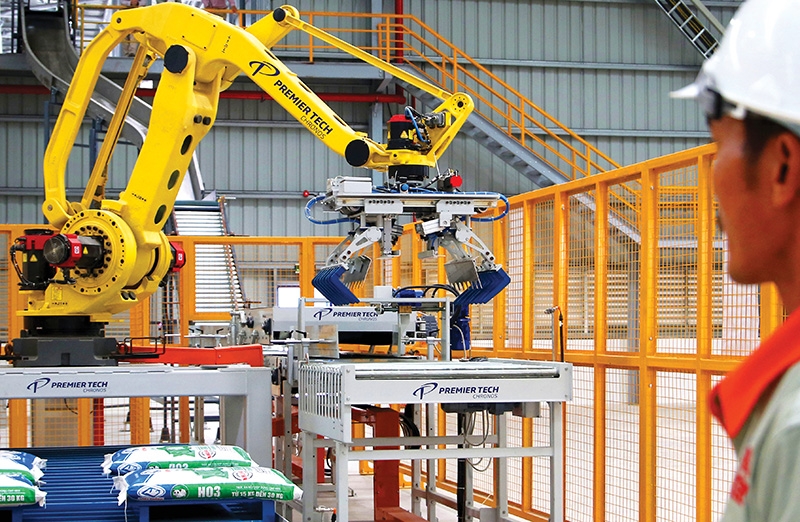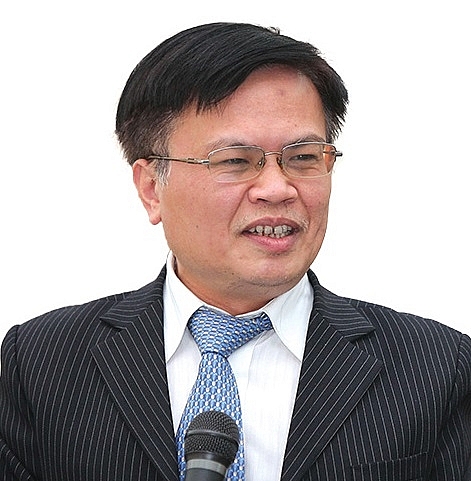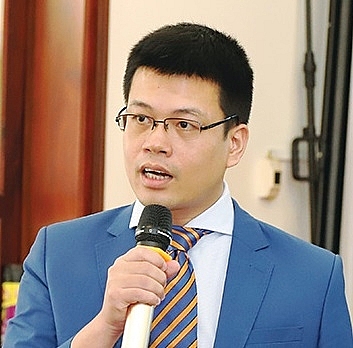Launching a fruitful and bright decade
 |
| Launching a fruitful and bright decade |
Getting ready for the digital transformation
 |
| Nguyen Mai – Chairman Vietnam Association of Foreign Invested Enterprises |
According to the Organisation for Economic Co-operation and Development, governments need to become more aware of digital economic development strategies to increase their benefits and cope with challenges including unemployment, inequality, and poverty.
It is one of the ASEAN’s priorities to become one of the first five digitalised economies before 2025, based on a big population of over 600 million, 94 per cent of whom are literate, 50 per cent are under 30 years old, and 90 per cent under 30 have access to the internet. It is forecast that the digital economy can increase the ASEAN’s GDP by another $1 trillion over the next 10 years. Vietnam boasts great potential to participate in Industry 4.0 and shift to a digital economy. First, Vietnam is a developing nation so it is not weighed down by old-fashioned production systems, and it will suffer from lower costs when shifting to a digital economy as compared to developed nations.
Second, the country is also now in a period of golden population. Currently, Vietnam has a population of more than 96 million, with 66 per cent using the internet. The number of Vietnamese people working with AI at home and abroad are almost the same as those in South Korea and Japan.
Third, the 3G and 4G mobile networks have been covering the nation, and the 5G network is being developed and will officially come into operation in 2020.
Fourth, Vietnam has more than 30,000 businesses operating in the hardware and software sectors, as well as ICT services. In 2017, their revenue totalled $91.6 billion, which was 12 times higher than $7.6 billion in 2007.
The last factor is the strong will and determination of the Party and the state in developing legal frameworks for the development of the digital economy.
What is most important now is to accelerate the shift to the digital economy in state management and corporate administration.
The government would need to encourage new ideas and innovation in this process, and create spaces for enterprises to conduct pilot activities so that they can successfully apply digital solutions. Digital applications must be a lever for beefing up innovation of individuals and businesses. Thus, there should be strong support from the government which must have transparent policies for the business community, especially small- and medium-sized.
The government needs to further improve policies so that it can combine successfully with the private sector in upgrading the country’s digital infrastructure, and applying the 5G service, the Internet of Things, AI, robotics, and non-cash payments.
Importance must be attached to training IT human resources, with the update of IT training programmes which closely pertain to the world’s new technological trends. Universities, colleges, and vocational schools must co-operate with enterprises in order to produce a high-quality workforce for the country.
According to calculations of the Central Institute for Economic Management, the shift to the digital economy can help the Vietnamese economy increase its GDP by another $28.5-$62.1 billion, equivalent to 7-16 per cent of GDP by 2030. The development of the digital economy must, in an extremely important manner, be conducted in close combination with institutional reforms.
Vietnam’s experience of more than 30 years of shifting to a market economy and international integration showed that in order to weather difficulties and take advantage of new opportunities, the decisive factor consists of the synchronous and non-stop reform of economic institutions which can create big positive changes in the future. Without such reforms, there will be stagnancy, negative activities, and social evils.
Economic institutional reform will help allocate resources appropriately and effectively. It is expected that the economy may grow by 7 per cent annually with slow and synchronous reforms, and 8-9 per cent annually with rapid and synchronous reforms.
The nation’s aspiration for prosperity must be that of each Vietnamese person. Such aspirations must be materialised via the improvement of labour productivity and innovation, so that the country can become more affluent.
Fostering a robust local business community
 |
| Vu Tien Loc - Chairman Vietnam Chamber of Commerce and Industry |
One week after the issuance of a report on law review in 2019 embracing 25 overlapping points in legal documents by the Vietnam Chamber of Commerce and Industry (VCCI), Mai Tien Dung, Minister and Chairman of the Government Office announced that in the government’s plan on cutting and simplifying business-related regulations for the 2020-2025 period, these 25 points will be amended.
The amendment methods will be clarified with all ministries, agencies, and the prime minister’s special taskforce in charge of boosting reform and business climate improvement to propose concrete solutions.
Since 2019, we have been awaiting the promulgation of a law simplifying and cutting business regulations, which is expected to be seen in February. Last August, the VCCI also reported to the government about these overlapping points, whose number was then 20. However, the chamber received no feedback from ministries.
If the plan is adopted, it will be considered a gift from the government and the prime minister for the business community. Currently, enterprises are at an intersection, but they do not dare to select any road due to numerous overlapping regulations. I do believe that if the regulations are amended, there will be big inflows of private and public investment in Vietnam.
In fact, these obstructions are not new. Since 2003, contradictions, overlaps, and even conflicts in the law system regarding investment and business have often been criticised by the business community and proposed to the VCCI and the prime minister’s special taskforce in charge of implementing the Law on Enterprises.
Many years later, the VCCI combined with the special taskforce to propose solutions to remove obstructions at a grassroots level.
Many localities then conducted strong reforms as they were in critical need of investment.
From 2016 onwards, the government began to take drastic actions to create a more favourable climate for enterprises and investors to perform. In 2016, it decided to remove all improper business conditions and sub-licences carved in circulars and documents of ministries and localities. More than 3,500 conditions of the type were then eradicated. In 2018, 50 per cent of business conditions and 50 per cent of the lists of goods subject to specialised inspection were phased out and simplified.
The business community showed a warm response with their confidence strengthened. Since 2016, the record number of newly-established businesses has been annually broken, from 110,000 in 2016 to over 138,100 last year. Notably, the number of large-scale businesses has kept increasing, and the number of small-scale ones has been reducing.
Never before has there been large spaces created for startups to perform as they do now. It is clear that only when businesses are strong can the economy be strong, and only when enterprises conduct innovation can we see an innovative economy.
Taking crucial international responsibilities
 |
| Nguyen Tri Hieu - Senior economist |
Vietnam’s new tasks as a non-permanent member of the UN Security Council and as ASEAN chair, attest to the country’s deeper engagement into the global economic and political situation, and it helps bolster Vietnam’s position in the international arena.
Vietnam’s task as a non-permanent member of UN Security Council proves challenging in current context as the relations between the United States and Iran have become a hot spot in the military and political turmoil in the Middle East.
Whether Vietnam, in this new status, can play a part in alleviating the tension or not needs more time to be assessed, these new tasks apparently prove Vietnam’s enhanced role in the international community. I am upbeat about Vietnam’s capacity to accomplish these very important international duties.
Regarding the targets of Vietnam’s striving to join the group of high-end medium income countries with per capita GDP reaching $18,000 by 2030, before reaching the group of high-income countries by 2045 when the country celebrates 100th anniversary of National Day, there is still a long way in my opinion. Statistics show that in 2019, the country’s GDP scaled $267 billion with per capita GDP approximating $2,790 only. This signifies that to reach $18,000 per capita GDP by 2030 which is more than six-times the current level, we must attain a breakneck growth of 60 per cent per year in the forthcoming decade.
Provided that Vietnam could manage to maintain current GDP growth of about 7 per cent per year in the forthcoming decade, by 2030 we would post 70 per cent growth over current levels that is also remarkable. One point to be taken into account is that the target $18,000 GDP per capita must be predicated on a 2020 basis, not the 2030 scenario.
It is because in the forthcoming decade, there are different factors affecting growth such as inflation while other countries regionally and globally are also evolving. Therefore, the $18,000 target set for 2030 will not be similar to that in 2020.
Vietnam is integrating increasingly deeply into the world economy. The country has signed a raft of free trade agreements with diverse countries. One of the most important is the Comprehensive and Progressive Agreement for Trans-Pacific Partnership, which has come into force for around a year now. Implementing it will bring the country multiple opportunities, such as tapping into new markets among the bloc’s member countries. I hold high expectations for this landmark agreement.
Along with this is the signing of the EU-Vietnam Free Trade Agreement that is expected to take effect this year after it is approved by the parliaments of the EU member states.
Aside this, Vietnam has become more and more thriving, representing a stark difference compared to when I came back home a decade ago in 2009 in terms of both people’s living standards and living conditions.
Simultaneously, we can count on many opportunities, such as export opportunities, the robust growth of tourism attested through a sharp growth in the number of visitors, or the buoyant performance of foreign direct investment last year and in the previous years.
Side by side with the opportunities, however, Vietnam is also looking at many challenges. One of the eminent difficulties is associated with global uncertainties. The trade tension between the US and China remains unpredictable until present that could affect the global economy, including Vietnam. Besides, the military tensions between the US and Iran have become a very hot issue at present.
If the tensions exacerbate, it might lead the world into an unforeseen crisis. These proceedings would inevitably dampen the global business development, and Vietnam, as an export-oriented country, will be hurt in this situation.
Beside economic matters, we are facing environmental and social issues also. Global warming and climate change affect every country on earth and cause damages economically.
Also social problems are rising such as human trafficking or alcohol consumption that diminishes the human productivity and economic growth.
Bolstering local Vietnamese enterprises
 |
| Do Thien Anh Tuan - Lecturer, Fulbright School of Public Policy and Management Fulbright University Vietnam |
Over the past three decades, Vietnam has reaped impressive economic and poverty reduction achievements, which have been greatly contributed to by the domestic private sector. The sector has been responsible for almost 50 per cent of Vietnam’s GDP, nearly half of the country’s total investment capital. Accounting for about 85 per cent of employment, the sector contributes over 30 per cent of the national budget and strongly boosts the country’s industrialisation and economic restructuring.
Without these contributions, the local economy would not be able to attain such impressive achievements in 2019. In other words, the private sector is becoming an increasingly important impetus for the economy.
The sector has sturdily developed in many aspects, with its effectiveness and competitiveness gradually improved. It is operating in many sectors in all the corners of the country. A number of big economic groups have been established at home and abroad. Many enterprises have been highly valued in the regional and international ranks, such as THACO, Vietjet, Novaland, Viettel, Masan, Vinamilk, TH Group, and Vingroup. Simultaneously, many types of Vietnamese-made products have been exported to 190 nations and territories.
The private sector has also greatly contributed to the formulation of national policies, boosting economic reforms, improving the business climate, and renewing the government’s economic management method.
However, we also see that the sector currently remains in difficulties in competition and development. Almost all enterprises are of a small size, with the majority of operations seen in the household-based economy with weak financial and technological health and weak governance and competitiveness. This has made it very difficult for them to participate in regional and global production value chains.
In 2019, there were over 138,100 newly established enterprises and nearly 40,000 enterprises resumed operation. Still, there were also nearly 30,000 enterprises halting their performance because they could not catch up with the development trend and failed to consecutively renew themselves. Besides, they found it difficult to have access to important resources such as land, capital, state support, and information, while facing difficulties in ensuring operational costs and output markets.
As for authorised agencies, over past years, their awareness about the role of the private sector and entrepreneurs has changed remarkably. The domestic legal system, policies, and mechanisms have gradually improved. The rights to own assets and freedom to do business of the public and enterprises have been institutionalised and protected by the law.
The state’s management method for the private sector has been renewed in a manner suitable to the market economy, with the boosting of administrative reforms and the improvement in the domestic investment and business climate in favour of investors and enterprises. Especially, the government has said that it will not criminalise all economic relationships and this will make investors and businesses feel secure when they are in Vietnam.
However, the private sector still has very few opportunities in partaking in the formulation of policies for national development. Their voices and concerns are still not listened significantly to by management agencies.
In many localities, legal regulations on fostering the private sector set by the Party and the government have yet to be strictly implemented, with the freedom in business and the right to possess assets still violated. This necessitates the demand for stronger renovation in policies and their enforcement at all levels.
We feel happy because the Vietnamese business community has been growing from strength to strength, with a strong aspiration to make the country further prosperous. They are trying to improve themselves, and their competitiveness and governance. They deserve a gold medal.
Shaping legal grounds for economic success
 |
| Nguyen Dinh Cung - Member of the Economic Advisory Group to the Prime Minister |
Vietnam is strongly beefing up economic reform to create a fairer business climate for investors and enterprises
Twenty years ago, the Law on Enterprises 1999 radically changed the mindset about business in Vietnam. It allowed people to do business by removing the regulation that anyone wanting to do business must “ask permission” and when the permission was granted, he could do business with a myriad of complicated procedures.
The “permission” referred to not only a licence, but also some note from a state officer in an authorised agency.
A business-friendly climate means freedom to conduct business, protection of the right to implement business, reduction of compliance costs, and safety in business, as well as decrease and removal of risks from policies, and strengthened enforcement of policies and the law.
Over the past years, thousands of licences have been removed over the past 20 years, and more licences will also be phased out in the future.
Currently, the freedom to conduct business of enterprises has been increased and protected. Their compliance costs have also decreased and their safety in business and production have also been raised. Their assets and business rights are also protected by law. Risks for them have been reduced remarkably.
For example, we can see petrol stations with different brand names in streets. Prior to 2018, the country’s planning on petrol business development did not allow the establishment of so many petrol stations.
In another case, about 20 years ago, a street in Hanoi was allowed to have only a maximum of three pho restaurants.
However, currently the conditions in many economic sectors have been opened up, but in many other sectors, businesses are allowed to trade in by the names of the sectors, and have yet to be clarified in how and how much to trade in the sectors.
Twenty years ago, enterprise owners had to supply an endless list of unnecessary documents to authorised agencies before being allowed to establish the enterprises, such as the certificate proving that they were over 18 years of age, and the certificate proving that they did not suffer from mental disorder and that they had no criminal records.
These types of documents clearly drove enterprises into great troubles.
A decade ago when the Law on Enterprises 2005 took effect, the regulatory impact assessment (RIA) was implemented for the first time. All benefits, costs, and power of all stakeholders were clarified.
At the time, the Vietnam Chamber of Commerce and Industry reviewed 800 documents and then released a big report, stating that if the law was not amended, it would not be implemented effectively.
Reality has shown that enterprises can join the market conveniently, but they cannot exist if their production and business activities are still bogged down in difficulties.
When assessing the Law on Enterprises, we believe that the law has become a success because the drafter is the Ministry of Planning and Investment, which is not the implementer of the law. Thus the ministry was not controlled by any benefits or interest groups.
This is what we want to propose to the government in carrying out institutional reform plans in 2020 and beyond.
In addition to implementing the RIA, the government must directly engage in reforms with the establishment of independent expert groups which will help put reforms in documents into practice.
Reforming the Law on Enterprises must be conducted together with the reform and change in specialised legal document system. What is important is that the reform spirit must be united for the freedom to do business, and this will create a more business-friendly climate.
Capitalising on FTAs to lure high-quality FDI
 |
| Nguyen Anh Duong - Head, Marco-Economic Policy Board Central Institute for Economic Management |
In 2020 Vietnam will continue expanding its international integration through the further implementation of free trade agreements (FTAs).
In 2019, Vietnam began to implement the Comprehensive and Progressive Agreement for Trans-Pacific Partnership (CPTPP) and signed the EU-Vietnam FTA (EVFTA) as well as the EU-Vietnam Investment Protection Agreement.
It is expected that Vietnam will begin to materialise the EVFTA and also ink the Regional Comprehensive Economic Partnership (RCEP) in 2020. These deals can help Vietnam improve its access to larger export markets.
According to the World Bank’s calculations, the CPTPP can help the country increase its export turnover by 4.2-6.9 per cent, while the RCEP can do the same for Vietnam with a rise of 3.6-4.3 per cent, based on different scenarios.
With the country’s export turnover totalling $263.5 billion in 2019, it is clear that any percentage increase in export turnover will be absolutely important for Vietnam in the time to come.
Besides this, FTAs have continued bringing about high-quality foreign investment to Vietnam. It is notable that foreign direct investment (FDI) into Vietnam remains stable recently, while disbursed FDI has continued rising, sitting at $20.4 billion in 2019.
According to the Organisation for Economic Co-operation and Development, the ratio of the domestic added value in Vietnam’s export goods reduced from 78.8 per cent in 1995 to 55.5 per cent in 2015.
However, the total added value harvested by Vietnam from exports (calculated with US dollars) increased 16.4 per cent annually on average in the same period. This has created bigger confidence for Vietnamese enterprises to participate in regional and global value chains more extensively.
The implementation of new-generation FTAs has and will increase external pressure for Vietnam in its process of improving the business environment. The business community highly appreciates the country’s infrastructure improvements, but it has still shown off some concerns.
For example, according to the World Economic Forum, Vietnam was ranked 103rd in road infrastructure quality in 2019. Thus, the effective implementation of FTAs would require a non-stop improvement in infrastructure systems such as roads, bridges, electricity, and water. Administrative procedures related to investment, business registration, production, and transport must be further simplified.
Some other challenges remain. Specifically, the first and most important thing is to raise awareness about FTAs. It is not natural that almost all resolutions of the Party and the government on international economic integration stress a big need to raise awareness about FTAs in general and international economic integration in particular.
The next challenge is to improve competitiveness. Vietnamese enterprises have focused on improving competitiveness in price only. However, if they fail to better their competitiveness in other aspects, such as product quality, ability to meet big orders, timely delivery, and distribution, they will find it difficult to enter the markets of FTA member nations, or they can even lose right in the Vietnamese market.
In addition, Vietnamese enterprises have also been facing numerous difficulties in meeting conditions about rules of origin (ROO). Different FTAs have different ROO regulations.
Even, special groups of products are also required to meet separate such regulations. For example, those for farm produce are different from those for textile and garment products, and the ROO in the ASEAN Free Trade Zone is different than that carved in the CPTPP and the EVFTA.
Statistics from 2018 showed that Vietnamese enterprises’ ability in taking advantage of incentives in a number of FTAs remained low, at merely 28-35 per cent. Though the CPTPP has been implemented for a year, the number of local enterprises’ taking advantage of some markets, such as Australia, is very limited.
Finally, one of the very important things now is how to select and attract high-quality FDI is not easy. The Politburo’s Resolution No.50-NQ/TW dated last August on orientations to perfect institutions, policies, improve the quality and efficiency of foreign investment co-operation activities towards 2030 was a necessary condition.
If the resolution fails to concretise specific criteria, it would continue being difficult to lure in high-quality FDI.
What the stars mean:
★ Poor ★ ★ Promising ★★★ Good ★★★★ Very good ★★★★★ Exceptional
 Tag:
Tag:
Themes: EVFTA & EVIPA
Related Contents
Latest News
More News
- Global partnerships key to Vietnam’s IFC development (December 26, 2025 | 16:18)
- Vingroup pulls out of bid to invest in North-South high-speed railway (December 26, 2025 | 11:42)
- Strengthening supply chains through trade promotions and customs reform (December 24, 2025 | 14:00)
- PM orders investment model for North–South high-speed rail (December 22, 2025 | 17:43)
- LS Eco Energy to invest in Vietnam rare earth sector (December 22, 2025 | 17:31)
- Government moves to establish International Financial Centre (December 21, 2025 | 21:00)
- Vietnam's IFC to target global investment flows (December 21, 2025 | 18:00)
- Two national hospitals expand capacity with new facilities (December 20, 2025 | 09:00)
- Ha Tinh breaks ground on major Vingroup industrial and energy projects (December 19, 2025 | 18:24)
- EVN launches major power infrastructure projects nationwide (December 19, 2025 | 18:17)




















 Mobile Version
Mobile Version